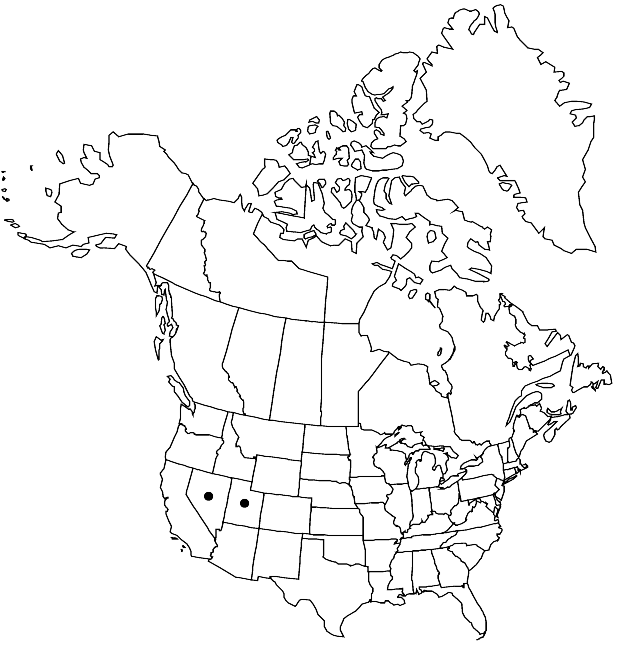Thelypodiopsis vermicularis
Contr. Gray Herb. 212: 81. 1982.
Annuals or biennials; (glaucous), glabrous throughout or sparsely pubescent basally. Stems (simple or, often, several from base), branched distally, 1.5–5 (–6) dm. Basal leaves rosulate; petiole 0.5–2.3 cm; blade broadly oblanceolate, (1.8–) 2–3.5 (–4) cm × 10–15 mm, margins entire or remotely denticulate. Cauline leaves sessile; blade broadly ovate to oblong, (slightly smaller distally), base strongly auriculate to amplexicaul, margins entire. Racemes dense. Fruiting pedicels horizontal to divaricate-ascending, straight or upcurved, (slender), 4–8.5 (–10) mm. Flowers: sepals ascending to spreading, purplish to greenish or white, 4.5–5.5 × 1.2–1.5 mm; petals white, spatulate, 9–11 × 3–4 mm, (margins not crisped), claw 4–6 mm; median filament pairs 4–6 mm; anthers linear, 3–4 mm; gynophore (stout), 0.2–1.5 mm. Fruits erect to ascending, straight or slightly recurved, (distinctly tortuous), torulose, 2–4 cm × 1.2–1.5 mm; ovules 30–42 per ovary; style cylindrical, 1–3 mm; stigma slightly 2-lobed. Seeds 1.2–1.7 × 0.6–0.9 mm.
Phenology: Flowering Apr–Jun.
Habitat: Brush communities, shale formations, clay or silty flat, juniper woodlands
Elevation: 1300-2200 m
Distribution

Nev., Utah.
Discussion
Thelypodiopsis vermicularis is known in eastern Nevada from Elko and White counties.
Selected References
None.
Lower Taxa
"elongated" is not a number."thick" is not a number."dm" is not declared as a valid unit of measurement for this property."dm" is not declared as a valid unit of measurement for this property.